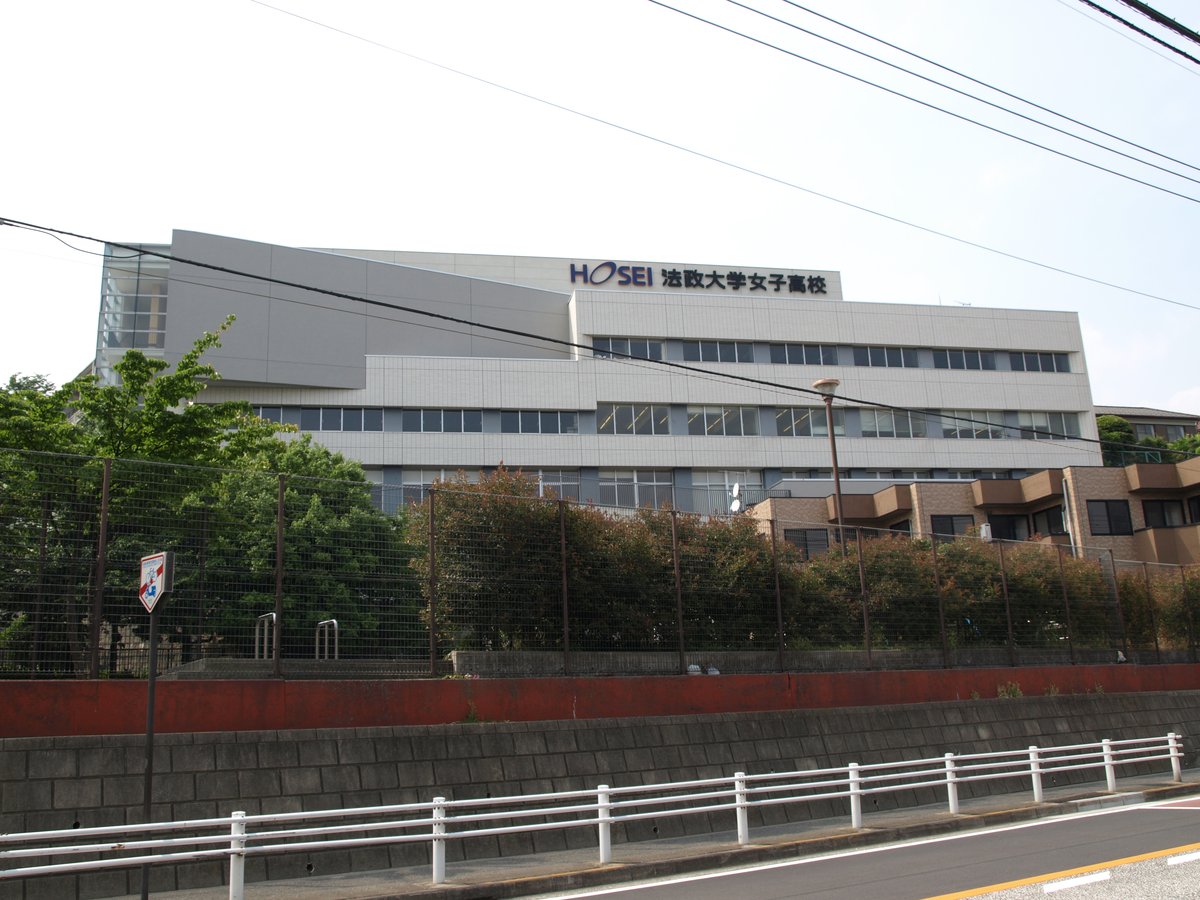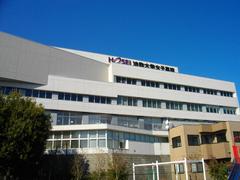
Hosei University Tokyo Visiting Guide: Tickets, Hours, and Attractions
Date: 14/06/2025
Introduction
Nestled in the heart of Tokyo, Hosei University is a distinguished institution with over 140 years of heritage. Established in 1880 during the Meiji Era as the Tokyo School of Law, Hosei played a crucial role in the introduction of Western legal principles and the modernization of Japanese higher education. Founding figures such as Dr. Ume Kenjiro and Dr. Gustave Emile Boissonade shaped its early reputation, particularly in French jurisprudence (alumnius.net; gotouniversity.com).
Today, Hosei University is renowned for its comprehensive academic offerings, active campus life, and commitment to global engagement. With a main campus in Ichigaya, centrally located near Tokyo’s major attractions, Hosei welcomes visitors to explore its blend of historic architecture, modern facilities like the Boissonade Tower, lush green spaces, and vibrant cultural events (global.hosei.ac.jp; hosei.ac.jp). This guide details how to visit Hosei University, including hours, access, and nearby points of interest, making it ideal for travelers, students, and history enthusiasts alike (gotokyo.org; studyinjapan.go.jp).
Contents
- Historical Overview
- Visiting Information: Hours, Tours, Accessibility, Getting There
- Campus Highlights and Key Attractions
- Nearby Tokyo Sights
- Visual and Interactive Resources
- Frequently Asked Questions (FAQ)
- Notable Alumni and Cultural Significance
- Summary and Final Tips
- Sources and Further Reading
Historical Overview
Founding and Early Development (1880–1919)
Founded as Tokyo Hogakusha (Tokyo School of Law) in 1880, Hosei University emerged during Japan’s modernization. The institution’s leadership—most notably Dr. Ume Kenjiro and Dr. Gustave Emile Boissonade—introduced Western legal ideas and comparative legal education (alumnius.net). In 1889, a merger with the School of French Studies broadened its outlook, and by 1903 it became officially known as Hosei University (gotouniversity.com).
University Status and Expansion (1920–1945)
Recognized as a private university in 1920, Hosei established faculties of Law and Economics and set up its Ichigaya campus by 1921 (global.hosei.ac.jp). The university’s baseball team was also a founding member of the Tokyo Big 6 Baseball League in 1925.
Modernization and Global Engagement (1946–Present)
Postwar reforms brought new faculties (Engineering, Social Sciences), correspondence courses, and additional campuses (Koganei, Tama) (gotouniversity.com). Hosei’s centennial in 1980 marked a renewed focus on internationalization, including the establishment of the International (now Global Education) Center. The university now attracts over 500 international students and participates in Japan’s Top Global University Project (studyinjapan.go.jp).
Visiting Hosei University: Practical Information
Visiting Hours and Campus Access
- Ichigaya Campus (Main Campus): Open to visitors typically from 8:30 AM to 6:00 PM on weekdays. Public access to academic buildings may be restricted; guided tours are encouraged for a comprehensive experience.
- Museum: Open Tuesday to Saturday, 10:00 AM–5:00 PM; closed Sundays, Mondays, and holidays.
- Other Campuses: Koganei and Tama campuses are primarily for research but occasionally open for events.
Tickets and Admission
- General Campus Entry: Free; no ticket required.
- Special Events/Exhibitions: May require advance booking or ticket purchase—check the official website for details.
Accessibility
- All Hosei campuses are wheelchair accessible, with ramps, elevators, and accessible restrooms.
- Visitors with specific needs are encouraged to contact the university in advance for assistance.
Getting There
- Ichigaya Campus: Accessible via Ichigaya Station (JR Chuo-Sobu Line, Tokyo Metro Yurakucho, Namboku, and Shinjuku lines).
- Koganei Campus: Near Koganei Station (JR Chuo Line).
- Tama Campus: Reachable by bus from major train stations.
Visitor Tips
- Wear comfortable footwear, as exploring the campus and surroundings may involve walking.
- Use public transportation for convenience; parking is limited.
- Check the university website for up-to-date visitor information.
Campus Highlights and Key Attractions
Ichigaya Campus: Tokyo’s Urban Academic Hub
- Boissonade Tower: A striking 26-story building housing key academic departments; ground-level exhibitions are open to visitors (Hosei University Access).
- Hosei University Museum: Offers interactive and bilingual exhibits on Hosei’s history and sustainability efforts (Hosei Museum).
- Campus Gardens and Architecture: A harmonious mix of modern and traditional structures, perfect for photography and leisurely strolls.
Koganei and Tama Campuses
- Koganei: Focused on science and engineering, featuring advanced labs and innovative campus design (Wikipedia).
- Tama: Known for its open green spaces and faculties of Social Sciences and Sports.
Cultural Events
- Hosei Festival (Hosei-sai): Annual campus festival held in November, featuring student performances, food stalls, and cultural exhibitions.
- Public Lectures and Art Exhibitions: Regularly held and often open to visitors.
Nearby Tokyo Attractions
- Imperial Palace: Iconic historical site within walking distance of Ichigaya campus.
- Yasukuni Shrine: Significant Shinto shrine nearby.
- Kitanomaru Park: Scenic park with gardens and museums.
Combine your campus visit with these Tokyo highlights for a full cultural experience (gotokyo.org).
Visual and Interactive Resources
- Virtual Campus Tour: Explore Hosei’s campuses online via official virtual tours (Hosei University Ichigaya).
- Photo Galleries: High-quality images of campus life, architecture, and major events are available on the university website.
Frequently Asked Questions (FAQ)
Q: Do I need tickets to visit Hosei University?
A: No, general entry is free; certain events or exhibitions may require tickets.
Q: Are the campuses open on weekends?
A: Generally, campuses are open on weekdays. Some events may be held on weekends; check the official calendar.
Q: Are guided tours available in English?
A: Yes, English-language tours are available by prior arrangement.
Q: Is the campus wheelchair accessible?
A: Yes, all campuses are equipped with accessible facilities.
Q: Can I take photographs on campus?
A: Outdoor photography is generally allowed; confirm indoor photography policies as needed.
Notable Alumni and Cultural Significance
Hosei University boasts an impressive alumni roster including former Prime Minister Yoshihide Suga, as well as leaders in arts, business, and sports (edurank.org). The university’s baseball and rugby teams are nationally recognized, and its cultural contributions are celebrated through public events and exhibitions.
Summary and Final Tips
Hosei University represents a living narrative of Japan’s educational and cultural evolution. Its accessible, centrally located campuses invite visitors to engage with Tokyo’s academic heritage, attend diverse cultural events, and enjoy tranquil green spaces amidst the urban landscape. For the latest event schedules, accessibility information, and guided tour options, consult the university’s official resources (hosei.ac.jp; global.hosei.ac.jp).
Plan your visit today and discover why Hosei University remains a cornerstone of Tokyo’s history and academic excellence.
Sources and Further Reading
- Hosei University Visiting Guide: History, Campus Tours, and Visitor Information in Tokyo, 2025 (alumnius.net)
- Hosei University Overview and History, Gotouniversity.com, 2025 (gotouniversity.com)
- Hosei University Factbook 2018, Global Hosei University (global.hosei.ac.jp)
- Study in Japan: Hosei University Profile, Japan Student Services Organization, 2025 (studyinjapan.go.jp)
- Tokyo Travel Guide, Go Tokyo, 2025 (gotokyo.org)
- Hosei University Official Website, 2025 (hosei.ac.jp)
- Hosei University Campus Tour Booking, 2025 (global.hosei.ac.jp)






























































































































































































































